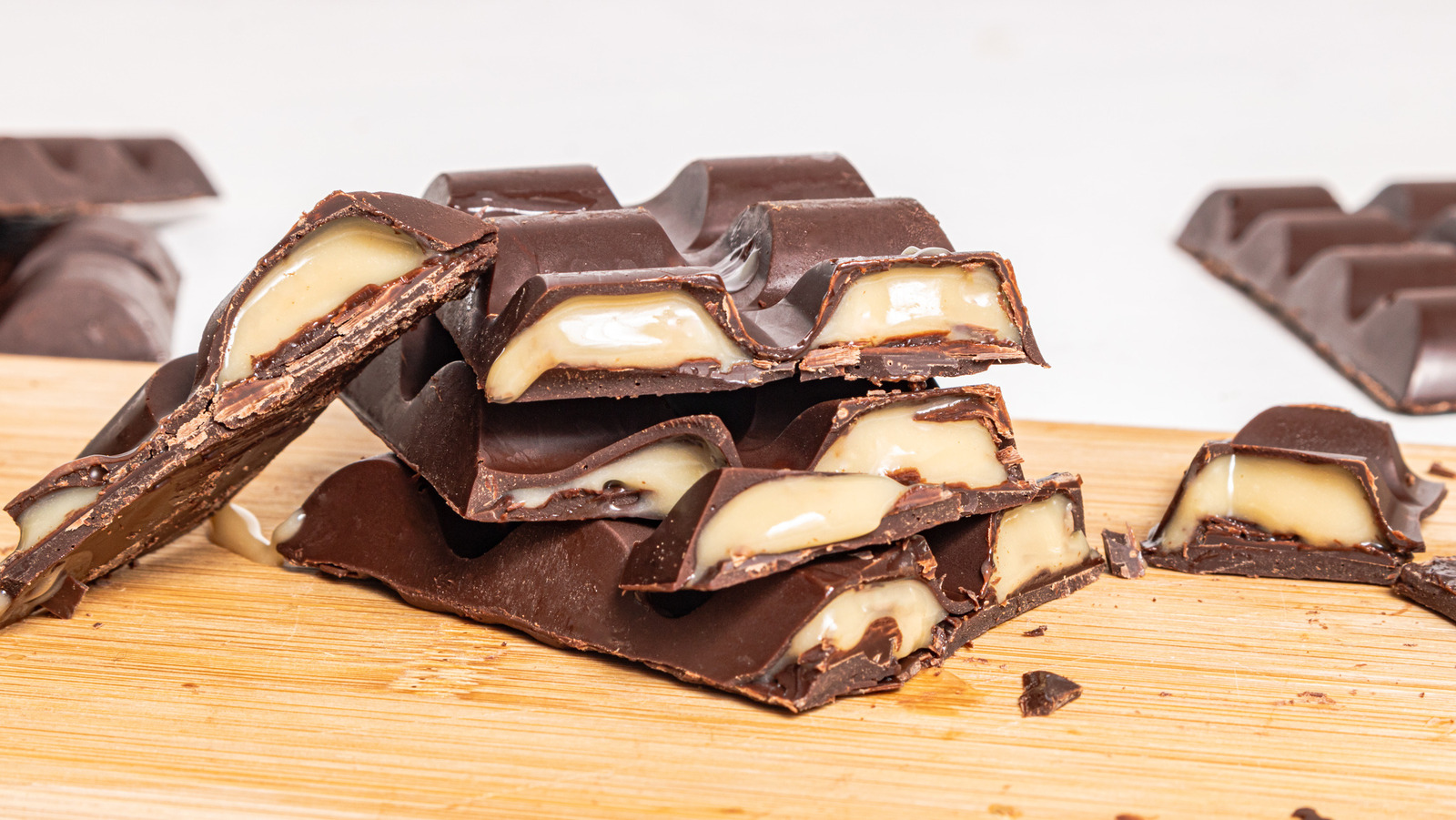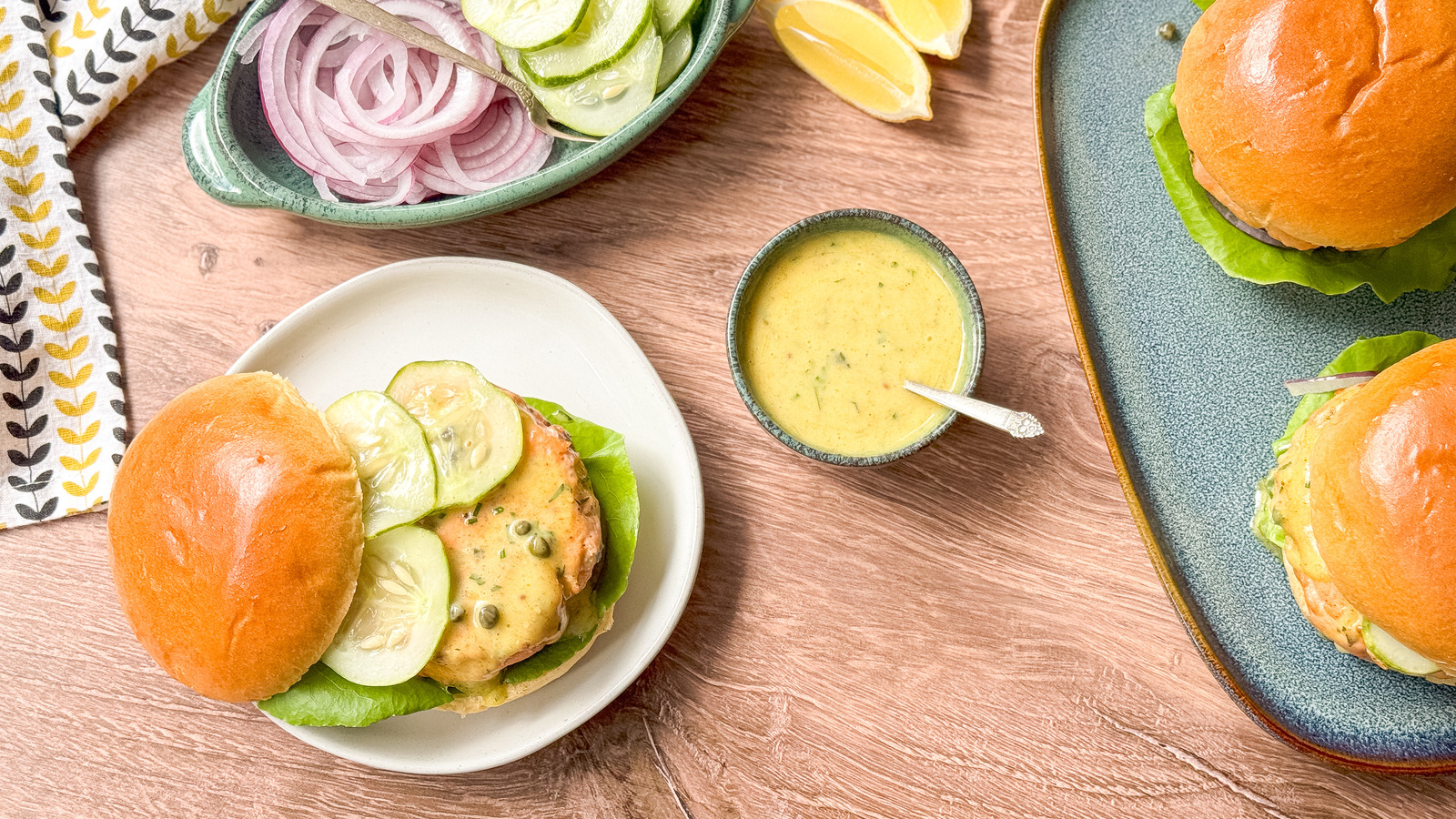[ad_1]
Julie Kinnaird/Chowhound
If the phrases “tuna salad” conjure unfavorable photos of mayonnaise-laden and monochromatic canned fish, this Spanish-inspired tuna salad with white beans and oranges gives you an entire new appreciation for the dish. Recipe developer Julie Kinnaird shares her interpretation of tuna salads that she tasted all through Spain. Kinnaird says that in Spain, tuna salad is commonly served alongside grilled fish and roasted potatoes, however it may also be the star of the meal with a facet of crusty bread. Kinnaird particularly loved a Valencia-style salad she had in Madrid, which was garnished with loads of juicy recent orange segments.
Spanish tuna salads sometimes characteristic white tuna packed in olive oil, quite a lot of olives, onion, greens, cooked beans, boiled eggs, and potatoes. Kinnaird’s model options all of her favourite elements, utilizing pimento-stuffed olives, recent fennel, pink peppers, onion, capers, crunchy toasted almonds, creamy white beans, and the pleasant, juicy oranges. She makes a salad dressing with the juice of the oranges, good-quality Spanish olive oil, sherry wine vinegar for a signature style, and recent oregano. The salad is filled with shade and taste, and it seems gorgeous when it is served on a platter.
Collect the components for Spanish-inspired tuna salad with white beans and oranges
For this recipe, Kinnaird makes use of her favourite canned Spanish tuna packed in olive oil, which is produced by Ortiz. Any good-quality white tuna packed in olive oil could be an acceptable substitute. The tuna is tossed with chopped pink onion, candy pink bell pepper, recent fennel bulb, sliced Manzanilla olives with pimentos tucked inside, and capers with a little bit of their brine. Canned white navy beans (or different small white bean varieties) add a creamy texture to the salad — simply make sure to rinse them first.
For the salad dressing, it would be best to use a good-quality Spanish extra-virgin olive oil (for authenticity), sherry vinegar, chopped garlic, and recent oregano. Juice from Valencia oranges (or different comparable varieties) is collected so as to add to the dressing when eradicating the segments from the peel and membranes. As a result of the olives and capers with brine are fairly salty, you will not want extra salt for this recipe, until you might have a private choice. The salad is completed with toasted slivered almonds and recent chopped Italian parsley, and it is served on a mattress of pink and white Belgian endive leaves.
Step 1: Slice the olives
Slice the olives into rounds.
Step 2: Reduce the ends off of the oranges
Reduce the ends from each oranges to reveal the flesh.
Step 3: Reduce the peel away from the oranges
Stand the orange on one flat finish on a reducing board and punctiliously reduce the peel and pith away from the flesh.
Step 4: Launch the orange segments from the membranes
Use a pointy knife to chop between the membranes and launch the segments and juice right into a bowl, squeezing out the additional juice from the membranes and peels. Switch the segments to a separate bowl.
Step 5: Make the dressing
Whisk the olive oil, sherry vinegar, garlic, and oregano into the orange juice to make the dressing. Put aside.
Step 6: Mix the salad components
In a big bowl, mix the sliced olives, beans, fennel, capers, caper brine, pink pepper, and onion. Add the tuna and oil from every can.
Step 7: Add the dressing
Add ⅓ cup of the dressing to the tuna combination.
Step 8: Toss the salad
Toss gently to mix and put aside.
Step 9: Add the almonds to a skillet
Add the almonds to a small skillet over medium warmth.
Step 10: Toast the almonds
Toast the almonds, stirring continuously, till golden brown (about 5 minutes). Take away from the skillet to chill.
Step 11: Prepare the endive leaves on a platter
To assemble the salad, prepare the endive leaves on a big platter or shallow serving bowl.
Step 12: Add the tuna salad
Mound the tuna salad combination on prime of the endive.
Step 13: Add the orange segments
Add the reserved orange segments.
Step 14: Add the almonds and parsley
Sprinkle on the toasted almonds and chopped parsley.
Step 15: Drizzle on the remaining dressing
End by drizzling on the remaining dressing.
Step 16: Serve the Spanish-inspired tuna salad with white beans and oranges
Serve the Spanish-inspired tuna salad with white beans and oranges instantly.
Spanish-Impressed Tuna Salad With White Beans and Oranges Recipe
This Spanish-inspired tuna salad is vibrant and recent. A mix of citrus, herbs, beans, and fragrant greens give this party-perfect dish its taste.
- ½ cup pimiento-stuffed Spanish olives, drained
- 2 Valencia or navel oranges
- 3 tablespoons Spanish olive oil
- 2 tablespoons sherry vinegar
- 1 small clove garlic, minced
- 1 tablespoon chopped recent oregano
- 1 (15-ounce) can small white beans (navy or nice northern), drained and rinsed
- 1 small bulb fennel, stem and inexperienced stalks eliminated, chopped
- 2 tablespoons capers
- 1 tablespoon caper brine
- 1 small pink bell pepper, stem, ribs and seeds eliminated, chopped
- ¼ cup chopped pink onion
- 2 (4-ounce) cans Spanish tuna in olive oil
- ½ cup slivered uncooked almonds
- ¼ cup chopped recent Italian parsley
- 2 small heads Belgian endive (1 pink, 1 white), trimmed and leaves separated
- Slice the olives into rounds.
- Reduce the ends from each oranges to reveal the flesh.
- Stand the orange on one flat finish on a reducing board and punctiliously reduce the peel and pith away from the flesh.
- Use a pointy knife to chop between the membranes and launch the segments and juice right into a bowl, squeezing out the additional juice from the membranes and peels. Switch the segments to a separate bowl.
- Whisk the olive oil, sherry vinegar, garlic, and oregano into the orange juice to make the dressing. Put aside.
- In a big bowl, mix the sliced olives, beans, fennel, capers, caper brine, pink pepper, and onion. Add the tuna and oil from every can.
- Add ⅓ cup of the dressing to the tuna combination.
- Toss gently to mix and put aside.
- Add the almonds to a small skillet over medium warmth.
- Toast the almonds, stirring continuously, till golden brown (about 5 minutes). Take away from the skillet to chill.
- To assemble the salad, prepare the endive leaves on a big platter or shallow serving bowl.
- Mound the tuna salad combination on prime of the endive.
- Add the reserved orange segments.
- Sprinkle on the toasted almonds and chopped parsley.
- End by drizzling on the remaining dressing.
- Serve the Spanish-inspired tuna salad with white beans and oranges instantly.
What kind of tuna is greatest for a tuna salad?
In case you have shopped for tuna lately, you might have seen that the canned fish aisle on the grocery retailer isn’t what it was! There appears to be an amazing variety of tuna varieties and types to select from. There’s oil-packed, water-packed, salted, marinated, or sodium-free. There’s additionally the query of which sort of tuna is essentially the most eco-friendly.
Albacore, or “white,” tuna is a preferable alternative for making tuna salad by way of taste, diet, and ethics. Albacore isn’t overly fishy tasting and has a agency texture that will not change into mushy whenever you combine it. Albacore additionally has extra omega-3 fatty acids than others within the tuna household. It’s a sustainable choice that’s not in peril of being over-fished. Kinnaird says that she has been consuming Ortiz olive oil-packed tuna for years due to its superior high quality and taste. Conservas Ortiz has canning origins in Spain from 1891, and the corporate was formally created in 1956. Ortiz has traditionally had a dedication to high quality and conventional fishing strategies, and all the tuna is caught by hand. The white tuna Ortiz makes use of in its merchandise is Bonito Del Norte, which is taken into account to be probably the greatest tunas in Spain.
What is the distinction between common and Spanish olive oil?
When most individuals consider olive oil, they consider Italy, which is legendary for utilizing the oil in all sides of cooking. But, surprisingly, Spain takes the highest honors. The nation produced over 5.9 million tons of olive oil in 2023, which was nearly double Italy’s manufacturing! Olives have been part of Spanish delicacies for hundreds of years, and the nation has been producing olive oil for the reason that time of the Roman Empire. Spain’s local weather is perfect for olive manufacturing, and it’s house to round 350 million olive timber. Andalusia in southern Spain produces extra olive oil than anyplace else on the planet.
So, what makes Spanish olive oil completely different from different nations’? Spanish olive oil could be very top quality and sometimes has a fruitier style than different varieties as a result of best rising circumstances. Spanish olive oil will differ from area to area in style and shade, relying on which sort of olives are chosen. In Andalusia, hojiblanca olives are used, which give the oil a grassy style. In Central Spain, Cornicabra olives are extra widespread and provides the oil a extra bitter edge. General, you possibly can depend on Spanish olive oil for prime marks in high quality and depth of taste.
[ad_2]










